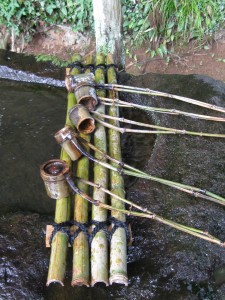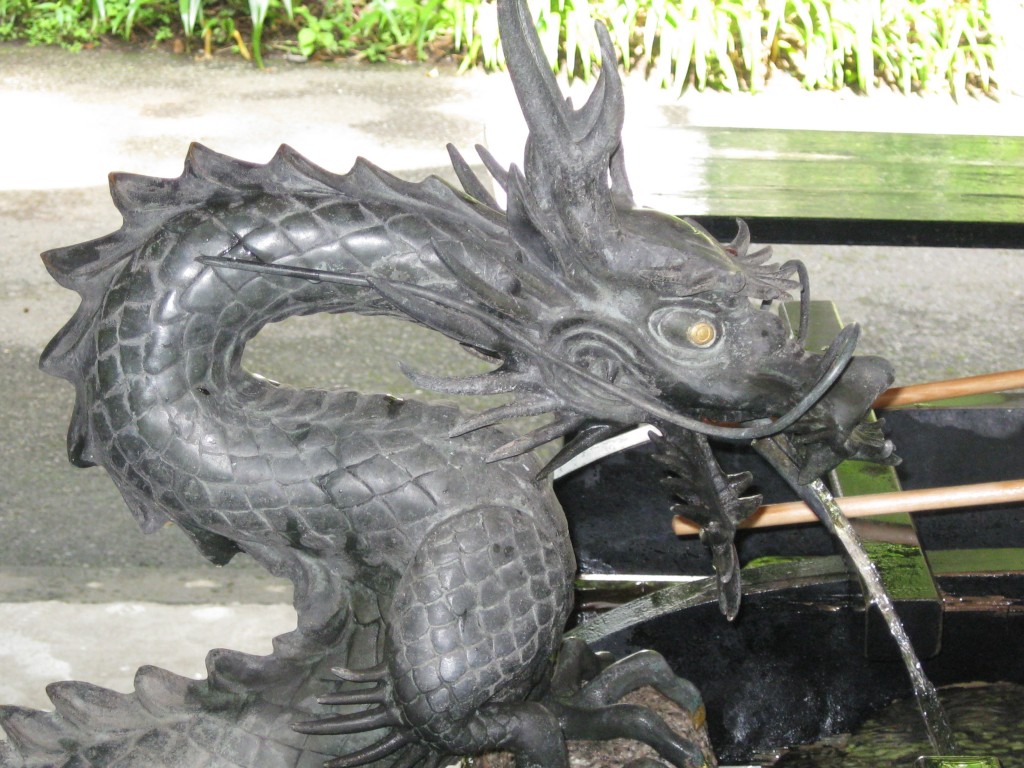In a review of a book on waste management in Japan, Michael Hoffman writes of how traditional notions of purity and pollution affect modern values. It’s a theme close to my heart, though I’m not sure that I follow the reasoning on this occasion. Not one of Hoffman’s better pieces, I feel… (For the full review, click here.)
****************************************************************************
What can an anthropologist teach us about waste? That its definition and the responses it calls forth are not universal but in large part culturally determined, Japan’s being rooted in notions of “purity” as old as Japanese civilization itself.

Do traditional notions of purity affect contemporary social values?
What does “purity” mean? An answer would help us answer a related question: What does “pollution” mean? Ancient Shinto beliefs held that purity was violated by sickness, menstruation, childbirth, physical injury. These were the “pollutions” of primitive Japan, seemingly irrelevant today, and yet primeval thinking can be oddly tenacious, as Kirby’s study of what he calls “Azuma Disease” shows.
Azuma is his pseudonym for an otherwise unidentified ward in western Tokyo where, in the mid 1990s, the opening of a new waste processing facility coincided with mysterious symptoms affecting some 10 percent of residents living nearby. Sufferers experienced breathing difficulties, bad coughs, various aches and pains, high blood pressure, insomnia, mental disorientation. What could the cause be?
The new plant was not an incinerator, merely a transfer facility, where waste was compressed prior to removal to landfill sites. It was scarcely visible, screened from view by a nicely landscaped “Forest Park.” Ward permission to build it had brought generous subsidies from the Tokyo Metropolitan government. The 90 percent who suffered no symptoms saw only benefits. When sufferers banded together to form a Group to End Azuma Disease (GEAD), they found themselves ostracized as pariahs, outcasts. Victims of pollution were reviled as polluters, their symptoms scorned as infecting the communal harmony.
When GEAD commissioned a scientific study that showed toxic levels near the plant to be significantly higher than elsewhere, members expected — “naively,” says Kirby — that the Tokyo Metro government would move promptly to protect them, but science, it seems, cuts both ways, depending on who’s manipulating it. The plant’s adamant assertion that there was no scientific basis for the protesters’ claims carried the day.

Cleanliness is next to godliness
The standoff drags on. Most victims have left; some stubbornly remain. As one put it, “Someone’s got to stay! I’ve got to make sure people remember here, right?” Post-3/11 readers will catch a premonitory echo here of the despair of residents of “hot spots” irradiated by Fukushima’s nuclear reactor meltdowns.
“Azuma Disease” is just one item on Kirby’s agenda. He discusses dioxins emitted by laxly regulated incinerators, Tokyo’s war on invading and proliferating jungle crows, and “the world’s most serious nuclear accident since Chernobyl” — not Fukushima, which happened after the book went to press, but its precursor, the 1999 “criticality incident” at Tokaimura — a clear and dire warning of worse bound to come, if only people had heeded it.
That they didn’t highlights the multifaceted anomaly of Japan’s approach to pollution. Shinto “purity” flowed into the “mottainai” (waste not want not) austerity of the 17th and 18th centuries, an ethic — or was it an instinct? — astonishingly ahead of its time in terms of what a later age would call eco-consciousness. This in turn prefigured willing wartime sacrifices under the slogan, “Extravagance is the enemy!”
So it was, and so in a sense it is today, but a modern peacetime economy does not run on austerity, and Japan’s postwar “economic miracle” produced, Kirby notes, “the world’s worst health damage from industrial pollution up until that time,” Minamata Disease being the most famous, though by no means the only, example. So clear was the evidence back then, and so overpowering the effects, that vigorous citizens’ movements arose and were remarkably effective. Pollution was regulated and up to a point cleaned up. The protests faded. A new generation of outbreaks like “Azuma Disease” — fortunately or unfortunately — are less visible, less widespread, and so easier to sweep under the rug. Japanese thinking was never tormented, as Western thinking was early on, by the rift between appearance and reality.
Apparent purity will do, as long as the real impurity doesn’t show.

Purity in the year of the dragon

Leave a Reply